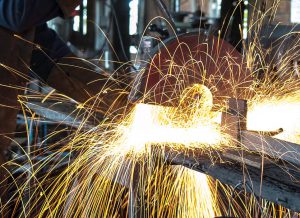
Metal fabrication is an integral part of countless industries, from construction to aerospace, to automotive and manufacturing. As a precision sheet metal fabricator, we’ve spent decades optimizing our processes to ensure a better yield at a lower cost. Below, we’ll share some tips and insights to help you achieve similar results with your own metal fabrication projects.
Select the Right Material
Choosing the appropriate material is fundamental to a successful metal fabrication project. Opt for materials, like stainless steel or aluminum, that meet the required strength and durability standards while also considering how cost-effective they are based on the product’s design. Often, it’s beneficial to consult with a materials expert to make the best selection for your specific application.
Plan and Design Efficiently
Before you start cutting and welding, invest time in careful planning and design. The more accurate and detailed your design, the less waste you’ll generate. Utilize CAD software to create precise blueprints, which will help minimize errors and scrap during the fabrication process.
Optimize Cutting Techniques
Cutting metal is a significant part of fabrication, and how you cut can impact both yield and cost. Consider using advanced techniques like laser cutting, depending on the project. This method produces less material waste, has higher precision, and can often reduce labor costs compared to traditional methods like plasma or abrasive cutting.
Embrace Automation

Automation technology has revolutionized the metal fabrication industry. Invest in CNC (Computer Numerical Control) machines and robotic systems to improve accuracy and reduce human error. These systems can work around the clock, increasing production efficiency and lowering labor costs over time.
Reduce Re-work and Errors
Mistakes can be costly in metal fabrication, both in terms of materials and time. To minimize re-work, ensure your workforce is well-trained, and implement quality control measures at every stage of the process. Implementing Six Sigma or Lean principles can help identify and eliminate errors and waste.
Manage Inventory Wisely
Maintaining an organized and efficient inventory system is crucial. Overstocking or understocking materials can lead to increased costs. Implement a just-in-time (JIT) inventory system to minimize the need for extensive warehousing and storage space.
Consider Recycling and Sustainable Practices
In today’s environmentally conscious world, sustainable metal fabrication practices are not just good for the planet but can also lower costs. Consider recycling scrap metal and explore sustainable materials like recycled steel or aluminum. You can often find cost-effective solutions that are both eco-friendly and economically viable.
Optimize Welding and Joining Techniques

Welding and joining processes can account for a significant portion of fabrication costs. Ensure your welders are well-trained and use appropriate welding techniques. Consider alternatives like spot welding or stud welding for specific applications, as they can be more efficient and cost-effective.
Implement Lean Manufacturing Principles
Adopting lean manufacturing principles can help streamline your operations, reduce waste, and improve overall efficiency. Tools like value stream mapping and 5S can uncover areas where time, materials, or resources are being wasted and help you make necessary improvements.
Invest in Frequent Machine Maintenance
To maintain a consistent level of productivity and quality, it’s vital to keep your machinery in top condition. Regular maintenance and timely repairs can prevent costly breakdowns and downtime, ultimately reducing costs.
Build Strong Supplier Relationships
Establishing good relationships with reliable suppliers can be a game-changer in terms of cost reduction. Bulk purchasing, negotiated pricing, and timely deliveries can all contribute to lowering your overall fabrication costs.
Metal fabrication is a complex field that demands precision, efficiency, and close attention to costs By implementing these tips and continually seeking ways to improve your processes, you can achieve a better yield at a lower cost, making your metal fabrication business more competitive and sustainable in the long run. Remember, the key is to stay informed about the latest advancements in the industry and be open to embracing new technologies and practices as they emerge.





